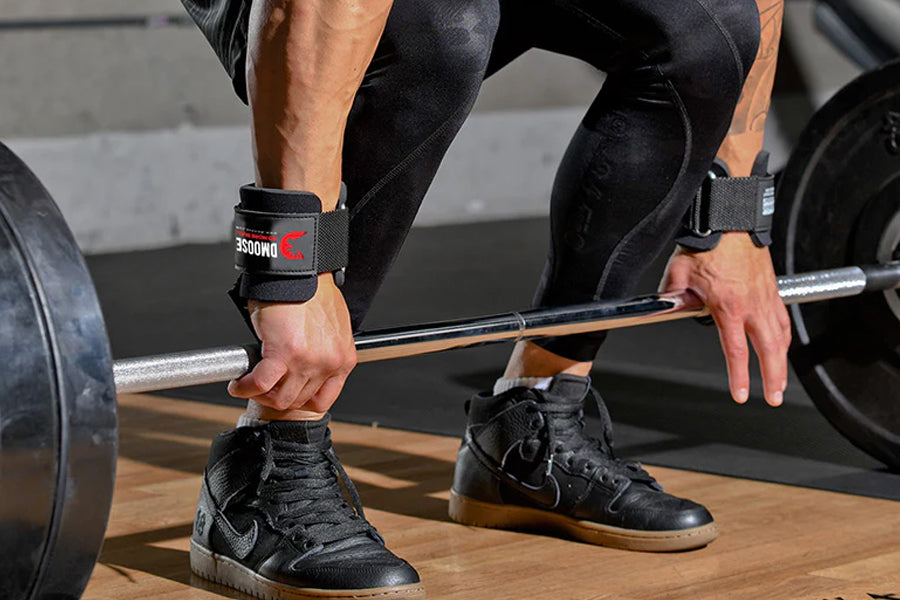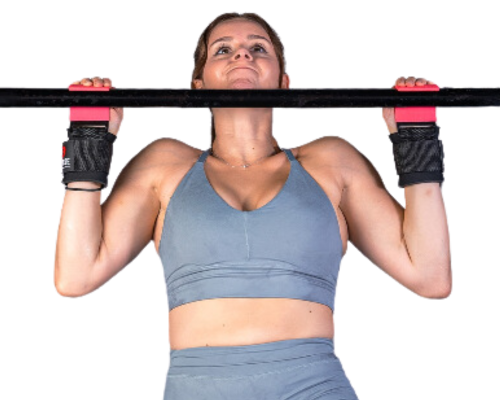If you’ve ever struggled to maintain your grip during those last few reps, you’re not alone. It’s a common challenge for many lifters—your muscles are ready to push further, but your grip gives out too soon.
Enter lifting hooks, the hidden tools in weightlifting that help you lift more and achieve greater strength.
In this guide, we’ll explore everything you need to know about lifting hooks, from how they work to how they can help you make your workouts more impactful.
What Are Lifting Hooks?

Lifting hooks, designed to enhance grip strength, are beneficial gym equipment. They employ a velcro strap that wraps around your wrist and a metal hook resting in your palm. By boosting your grip strength, lifting hooks can ease the stress on your joints and simplify your lifting process, enabling you to carry more weight without requiring frequent adjustments.
Many types of lifting hooks are available, including standard J-hooks and two-finger hooks. Some modern variants even come integrated with lifting gloves for additional convenience. These hooks have a significant positive impact on your workouts by providing superior grip strength. However, they're most effective when used for "pull exercises" like deadlifts, barbell rows, upright rows, shrugs, and so on.
While they offer numerous benefits, lifting hooks are generally pricier than typical wrist straps. Their manufacturing involves using leather, which necessitates more resources, thereby adding to their cost compared to straps.
Which Exercises Can You Do With Lifting Hooks?
There are particular workouts where lifting hooks really shine. This handy gear can be your secret weapon, giving you that extra boost and support, helping you nail those tricky moves while keeping you safe from injuries.
With lifting hooks in your arsenal, you can ramp up your grip strength, keep your form on point, and zero in on those target muscles without your grip strength holding you back. Let's dive into some exercises where lifting hooks can make a world of difference.
Farmer's Walk

A frequent hurdle that arises during farmers' walks is the premature fatigue of grip strength, often before the shoulders, traps, and back muscles have been fully worked out. This can compromise the efficiency of the exercise. To tackle this problem and optimize the development of upper body strength, it is strongly advised to utilize lifting hooks.
Lifting hooks offer an outstanding remedy by reducing strain on the forearms, enabling you to extend your training session until exhaustion.
How to do it:
- Maintain an upright posture with your feet shoulder-width apart, and let your arms hang naturally at your sides.
- Position the dumbbells on the ground. Lower yourself into a mini squat to grasp a dumbbell in each hand.
- Draw your shoulder blades downward and backward, brace your core, and rise back to a standing position.
- Begin walking, ensuring your head remains elevated and straight, your shoulders are pulled back, and your core is fully activated.
- Complete a minimum of 20 steps.
Lat Pull-Downs
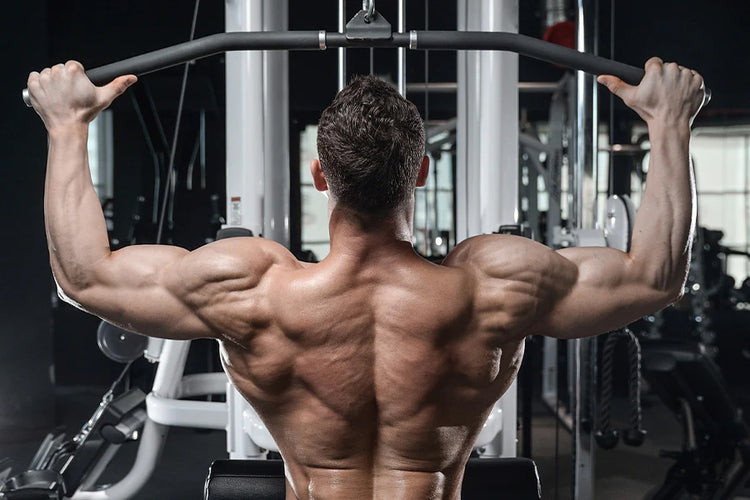
Lifting hooks can significantly improve the effectiveness of lat pull-downs. Their usage minimizes arm engagement, leading to more stimulation of the targeted muscles. This results in improved muscle isolation and aids in achieving the desired muscle growth effect.
How to do it:
- Secure a wide grip handle to your machine and position a lat pulldown, then take a seat.
- Begin by holding the handle with a pronated (double-overhand) grip. Follow this by lowering your shoulder blade while stretching your shoulder.
- Draw the handle towards your body until your elbows align with your torso. Afterward, gently return it to the initial position.
- Continue this sequence until you've completed your targeted number of repetitions.
Deadlifts
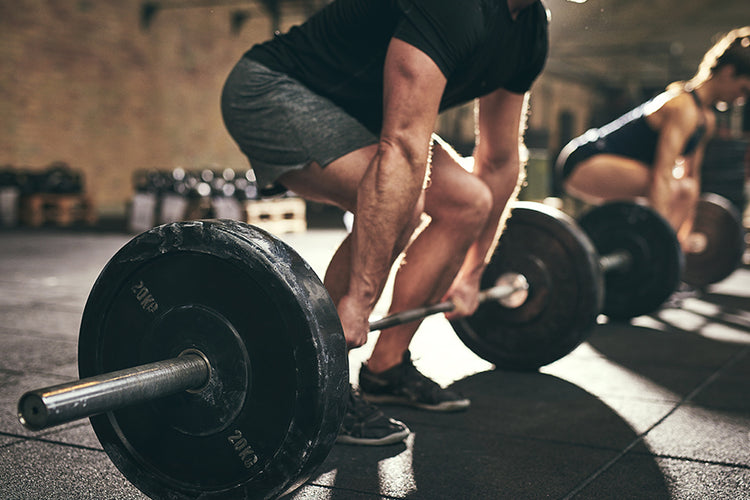
Lifting hooks are highly effective for high-repetition deadlifts, mainly when aiming for a rep range of 8-12. By minimizing arm involvement, these hooks can aid in the cultivation of a more robust back during such intense deadlift sessions.
How to do it:
- Stand with your feet hip-width apart, positioning the bar above your shoelaces.
- Lean forward and push your hips backward until your torso is parallel to the floor.
- Grasp the bar with a double overhand grip and slightly tug it. Ensure your armpits are directly over the bar and are tightly clenched.
- As you lower your hips, start lifting the bar. Ensure you're lifting the bar in a straight line as you hoist it up.
- Maintain an even distribution of weight across your entire foot.
- Once your hips are fully extended, reverse the motion to return to your starting position.
- Continue this process for the intended number of repetitions.
Related Article: Deadlift Vs. Romanian Deadlift
Who Should Use Lifting Hooks?
If you're a beginner in weightlifting and have yet to achieve the milestone of lifting more than 300 lbs, lifting hooks can benefit you. However, it's crucial to consider the size of your hands since these hooks are often more suited for those with bigger hands.
Lifting hooks can be particularly beneficial if your main objective is to enhance your grip strength for workouts like deadlifts, rows, and shrugs without needing additional support for other exercises.
DMoose Lifting Hook

DMoose Lifting Hooks offer a highly beneficial improvement to your workout regimen, delivering outstanding support and grip for intense lifting exercises. These hooks are designed with resilience in mind, boasting heavy-duty steel hooks that can endure strenuous training sessions.
The wrist straps, made of comfortable and adjustable neoprene, ensure a secure and cozy fit to avoid slippage or discomfort during lifting. With a 2.8-inch opening, the hooks can easily be attached to barbells, dumbbells, or cable machines.
This feature guarantees a sturdy and dependable grip, reducing stress on your wrists and fingers. DMoose Lifting Hooks are especially useful for deadlifts, shrugs, and pull-ups, where maintaining a firm grip is essential for optimal form and peak performance.
Incorporating these lifting hooks into your routine can help boost your lifting prowess and allow you to concentrate more on engaging the intended muscle groups without restrictions from grip strength. Whether you're a novice or a seasoned lifter, DMoose Lifting Hooks offers a significant advantage to elevate your.
What Are the Factors to Consider Before Buying Lifting Hooks?
When buying lifting hooks for weightlifting and strength training, it's crucial to consider the following factors:
Weight Capacity
The weight capacity of lifting hooks refers to the maximum load they can handle. This is one of the most crucial factors to consider.
If you're lifting heavy weights, you'll need hooks that can withstand that pressure without snapping or failing. Always ensure the hooks you choose to align with your lifting goals.
Comfort and Fit
Comfort is paramount when it comes to lifting hooks. They should fit snugly around your wrists without causing any discomfort or pain. Poorly fitting hooks may cause blisters or calluses. Some models feature adjustable straps, enabling you to customize the fit according to your comfort level.
Quality of Material
The hooks should be made from robust, durable materials that can endure frequent use and heavy loads. Steel hooks are often the most durable. The strap material also matters; it should be comfortable yet sturdy, such as neoprene or heavy-duty nylon.
Versatility
As all lifting hooks aid in grip strength, some are more versatile than others. Certain designs are better suited for specific exercises.
For instance, lifting hooks typically excel in "pull" exercises like deadlifts, barbell rows, upright rows, shrugs, etc. Ensure the hooks you choose complement the types of exercises you frequently perform.
Grip Strength
Good lifting hooks should enhance your grip strength, allowing you to lift heavier weights without solely relying on your hand and forearm strength. They should have a non-slip coating or texture to prevent the bar from slipping out of your hands during intense workouts.
Cost
While lifting hooks can provide significant benefits, they are pricier than standard wrist straps. Therefore, consider your budget before choosing a pair.
However, don't compromise on quality to save a few dollars. Investing in a high-quality, slightly more expensive pair that will last longer and perform better is highly recommended.
Reviews and Ratings
Before making a purchase, look at the product reviews and ratings. These often provide real-world insight into the product's performance, durability, and overall value. Look for consistent trends in the reviews, both positive and negative. It could be a red flag if many users report the same issue.
Always remember, while lifting hooks can significantly aid your weightlifting and strength training, they are not a substitute for building natural grip strength. They should be used as a tool to enhance your workouts, not replace the need for developing grip strength naturally.
Are Lifting Hooks Safe to Use?
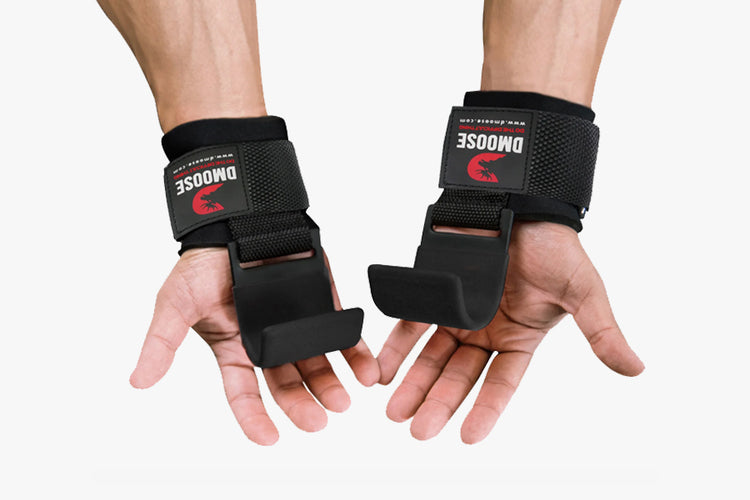
When used correctly, lifting hooks can be a safe and effective tool for weightlifting. Here are some key points to remember about the safety of lifting hooks:
- Never exceed the hook's working load limit: The working load limit (WLL) is the maximum weight the hook can safely handle. Exceeding this limit can lead to equipment failure and potential injury.
- Proper loading is crucial: Hooks should not be loaded improperly or tip-loaded. They should be loaded in the plane of the hook, not on the tip.
- Regularly inspect your hooks: Before each use, check for any signs of wear, deformation, or damage. Look out for any nicked, worn, cracked, or gouged areas. If you see any of these signs, do not use the hook.
- Use a safety latch: While not always required, a safety latch can prevent the load from slipping off the hook.
- Correct usage: Lifting hooks are designed to improve grip strength and should not be used as a primary method of holding the weight. Always maintain a firm grip on the bar when using lifting hooks.
FAQs
1. What are the safety concerns while using lifting hooks?
Using lifting hooks correctly and adhering to the right lifting protocols is important to prevent injuries. Lifters should also be careful of the weight capacities of their equipment and maintain them in good condition to avoid any mishaps.
2. Is lifting hooks or straps better?
Both lifting hooks and straps offer enough convenience and support for heavy lifts. Straps are considered a better alternative for mimicking natural grip, reaching maximum deadlift, cost-effectiveness, and durability. On the other hand, lifting hooks are much easier to use and don't require any adjustment against the bar.
3. How to clean lifting hooks?
Cleaning your lifting hooks properly is essential to maintaining your fitness equipment. Start by brushing off any dirt or grime in the hooks using a dry toothbrush.
Once you've removed the debris, prepare a mild soap solution with warm water and gently clean them with a soft cloth. Avoid using harsh chemicals that can damage the product. After cleaning, thoroughly dry the hooks with a clean towel.
4. Do lifting straps protect wrists?
Absolutely yes! They protect your wrists while performing various pull movements.
The Bottom Line
Lifting hooks are a valuable asset for anyone in weightlifting or strength training. They enhance grip strength, allowing you to lift heavier, perform more reps, and better target muscle groups while reducing strain on your wrists and hands, which helps prevent injuries.
However, it's important to use them correctly—they’re not a replacement for building natural grip strength but a tool to boost your workouts and performance.
When selecting lifting hooks, consider factors like weight capacity, comfort, material quality, and user reviews. DMoose Lifting Hooks, for example, offer a durable and comfortable option that can elevate your training routine.
Adding lifting hooks to your routine can significantly enhance your workout efficiency and help you achieve your fitness goals faster.










